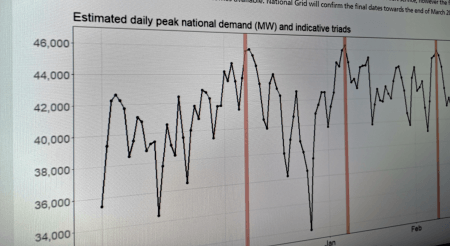
Ofgem’s Targeted Charging Review - what you need to know
Ofgem's Targeted Charging Review can be difficult to get your head around, so we've created this video to help you understand what's happening.
At EDF we’re making some changes to the way we price our electricity contracts. It’s all because of Ofgem’s Targeted Charging Review.
It’ll affect the way we work out your quote. So, we wanted you to know why it’s happening.
Okay, what’s changing?
The big change is the way suppliers are charged for TNUoS and DUoS costs, also known as the transmission and distribution charges. These costs are split into two parts.
One, residual, which is the cost of maintaining the electricity network.
And two, forward looking, which covers the cost of expanding the network.
This change only effects the residual charge, which is 90% of the cost of TNUoS and 50% of DUoS.
At the moment, the residual charge is built into your unit rate. But from April 2022, network operators will be charging suppliers like EDF a fixed amount for every business customer’s site. Essentially, it means similar sites will pay the same towards maintaining the network.
So, how will that affect your quote?
Well, customers will be placed in one of several bands, depending on size. Your band will determine the amount you pay for part of your TNUoS and DUoS costs. At EDF, we’re adding this fixed amount to the standing charge, because we think that’s the fairest and most accurate way to do it. So, from April 2022, your quote will look a bit different. The standing charge will go up, to reflect the new way of charging. But the unit costs will go down.
So, why are different suppliers quoting different charges for the same two non-energy costs?
There are a couple of reasons...
- First - some suppliers may still be building the residual cost into the unit rate, rather than just the standing charge. That may mean you get a less accurately priced quote. The problem is, if they haven’t charged you enough, they could ask you to pay more later.
- And secondly - there’s one more cost that EDF has factored in, but many suppliers haven’t yet.
To allow for the switchover, when charges are split into the residual and forwarding looking parts, and make sure everyone’s paying the right amount, there’ll be a transition charge between April 2022 and April 2023 for TNUoS for half-hourly sites.
We'll take some time to explain how it works, because this is important.
Currently, the network companies calculate both the residual and forward-looking charges to suppliers only in the winter months. From March to October, suppliers aren’t charged these costs, as they’re deferred to the winter months.
But from April 2022, 90% of these costs, the residual part, will be charged monthly, across the entire year. So, if your contract start date is April 2022 which coincides with the start of the scheme then you’ll see no changes.
However, IF your contract start date is between May 2021 and March 2022, your quote should include some of the old winter charges, and some of the new monthly charges. So, some customers may see a higher quote than normal.
If your contract start date is April 2022 (for a 12-month term) then you will not be affected. However, the closer the start date of your contract is to October, the more your quote will be impacted by this cost.
In this example of an October start date for 12 months, the transition cost will add a further £540 - that’s 45% - of TNUOS costs to your quote.
At EDF, we’ve built this in to your quote because it’s the right thing to do, and we wouldn’t want to hit you with this extra charge in the future, like some other suppliers might do.
But it IS a one-off adjustment, and once your contract moves beyond April 23, you’ll no longer need to pay this transition charge.
So, let’s recap – how do you compare different quotes from different suppliers?
Just remember, you’re not comparing costs at all. You’re comparing forecasts – forecasts for the new fixed non-energy costs and forecasts for the transition charge to balance out the changes. Not all suppliers have factored in these changes yet. And some will be more accurate than others. At EDF, we mentioned we’re adding this fixed amount to the standing charge. Why have we done this? It’s to protect customers from over paying if they use more energy than they predicted, or under paying, and maybe being charged later, if they haven’t used as much as they thought.
Our advice? To compare different quotes with confidence, check suppliers’ Terms and Conditions and ask if they've included TCR in their quote!
Related articles

What the Energy Bills Discount Scheme means for businesses

